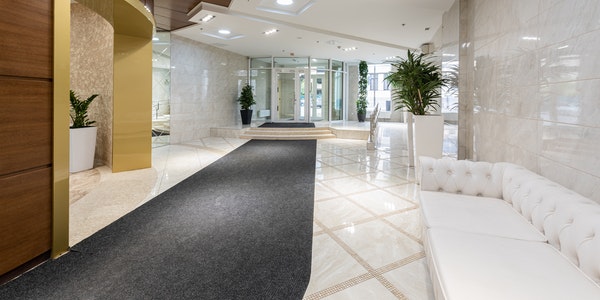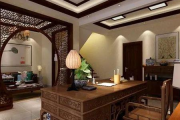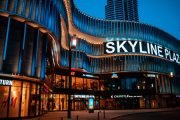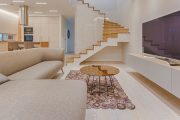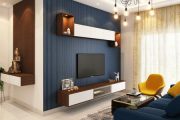Lighting is the most durable and lowest-cost way to create an atmosphere at home. Lighting can not only create romance and warmth, but also create a warm and harmonious atmosphere. Good lighting can make a big difference in your home. Next, I will tell you about the use of these lights.
The Role of Interior Lighting
Color is an important means of interior decoration. It is simple and easy to adjust the color of the room through the color of the light, and the combination of light and shadow has the best effect. Lighting can enhance the three-dimensional sense of structural lines, and the smooth shape of lamps and lanterns will also bring decorative vitality to the space. Sometimes the use of light and shade changes in the light can also make the indoor living space more rich in layers.
In addition, the light can also play a role in adjusting the height. If the height of the room is too high, a wall lamp that projects upwards can be used to divide the wall into two sections, light and dark. At this time, the role of the light is equivalent to the role of the skirt.
Different functions require different lights. Whether the design of indoor lighting is compatible with the function of use, whether it meets the lighting requirements, and whether it gives people a comfortable feeling, directly affects the quality of the building space and affects people’s daily work and life.
Different Types of Lighting
Different lights can create different atmospheres. Even a table lamp and the like, if carefully arranged, it will produce a lot of changes in the projection effect and mood. The light and transparent paper lampshade emits light to the surroundings, making it soft, ethereal and more life-like.
Lights can also play a role in dividing areas. It is usually reflected in the decoration of the living room. If you hang a long-arm chandelier above the dining table, and the warm light shades around the dining table, then it will naturally define the dining area in the living room.
The advantage of lighting partition is that it can not only carry out functional partition, but also maintain the relative integrity and transparency of the space, and it can be divided and combined freely. The use of lighting to accentuate the decorative accents of an interior couldn’t be more appropriate. For example, the small decorations in the corners were originally inconspicuous, but each place was illuminated by small spotlights, and these small decorations immediately became the visual center of the entire corner or even the entire room, attracting people’s attention. This means of emphasizing the key points is simple and effective, and can change the key points at different times through the switch of the light.
Background lighting
The light from the background lighting fills the room with a soft, inviting light that humanizes the space. For ideal background light, modern lighting designs use light reflected from walls and ceilings. In this way, bright spots can be avoided, and the light will not create shadows on people’s faces, so that a satisfactory light effect can be achieved. Backlighting can come from wall sconces, pendant lights or high light sources such as cabinets, beams and columns.
Decorative lighting
The task of an ornate chandelier, a sconce shaped like a candlestick, is to shimmer and show off the surface it illuminates, creating the illusion of providing background light to the room. This kind of lighting must be accompanied by a clear layer of auxiliary lighting, because if the decorative lighting device is used as the whole light source of the room, the whole space will appear too dazzling.
Accent lighting
Accent lighting uses carefully placed, concentrated beams of light to illuminate an object, artwork, bonsai or some architectural detail. The main purpose is to achieve artistic effect. Accent lighting is often designed to make the viewer feel that the light is provided by a less bright source, such as a candle or a chandelier on a wall. Recessed adjustable lighting, tracking lighting, or movable lighting can all provide light for accent lighting.
Task lighting
Work lighting is a lighting device specially designed for desk work. It is a very concentrated high-brightness light lighting that people need for work or activities with more eyes. Lamps such as those commonly used in pharmacies, desk lamps, light strips mounted under cabinets, or vertical strips mounted on either side of a mirror in a bathroom can provide task lighting.
Lights for Different Functional Spaces
bedroom
The bedroom is a place to rest. People spend one third of their time in bed, and there is no reason not to pay attention to room lighting. Bedroom lighting also often uses warm color light in hue to appear warmer, and should be lower in brightness. Create a soft, warm atmosphere with ambient lighting. Dimmable, switch should be convenient, we must consider the night light.
In addition to general lighting, local lighting should be added to the bedside and dresser to facilitate reading and dressing. Low-brightness strip lamps can be installed vertically on both sides of the dresser, and the light source used has better color rendering to show people’s natural skin tone. Medium beam wall lamps can be installed on both sides of the head of the bed, and the wall lamps on each side can be adjusted and switched independently to meet individual needs. A table lamp can also be installed at the bedside. If the room is larger and has a writing desk or sofa, place a table lamp on it or a floor lamp next to it.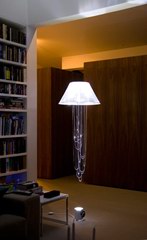
study
The study is generally the second most private space after the master bedroom. In it, you can think, write, check information on the computer, listen to your favorite music, and plan some things you want to do in the future. Therefore, the atmosphere of the space should be calm and quiet, and this direction should be considered when using lighting.
living room
The living room is the center of people’s daily life, so the brightness of the light must be sufficient. The function of the living room is more complicated than that of ordinary rooms, and the content of activities is also rich and varied, such as talking, watching TV, listening to music, reading, and meeting guests. Therefore, the requirements for lighting must have room for flexibility and change, and a more flexible lighting method should be used. Usually, there are many kinds of light sources used in the living room, including flood light source, auxiliary light source and accent lighting, which can be changed according to the function of use.

